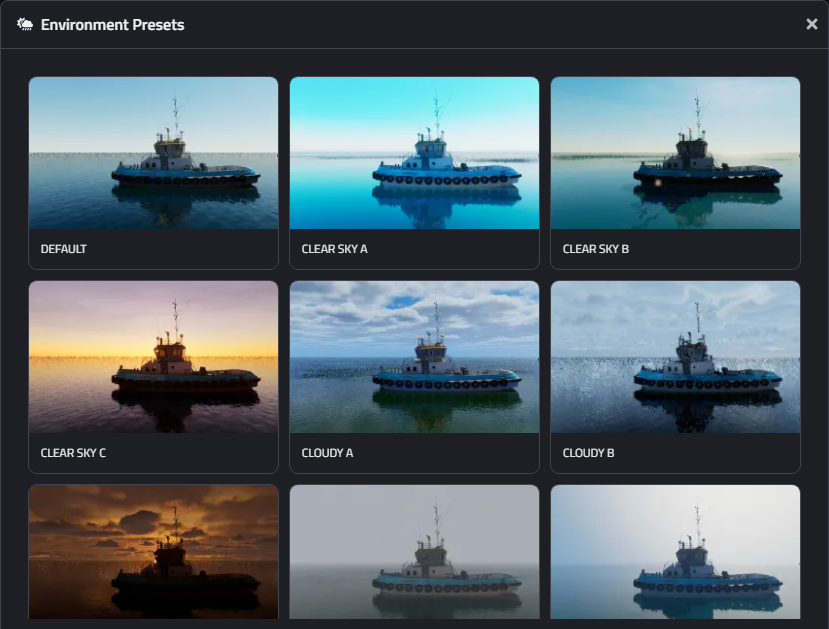Use environment presets¶
Attention
This feature is intended for use with our maritime worlds:
World("lake")World("ocean")World("port_city")
Applying presets¶
Apply presets to quickly match the look and feel of the scene to your reference imagery.
From the bottom drawer, click on Environment to access various presets.

Selecting a preset will copy it to your clipboard. Paste it into your notebook and run the cell to apply the preset.
For example, to apply the “Partly Cloudy B” preset:
world.env.apply_preset("clear_sky_b")

and the “Rainy A” preset:
world.env.apply_preset("rainy_a")

Note
Applying an environment preset affects both world.env.weather and world.env.ocean settings.
For instance, rainier presets will have rougher seas in addition to cloudier and darker skies.
Tip
If your use case requires presets outside of the available ones, contact Bifrost support and we’ll be glad to help.
Randomize presets across frames¶
To create diverse and varied scenarios, you can randomize environment presets across frames.
Passing randomized parameters to keyframes
Since scenario.set_keyframe accepts keyword arguments of the form attribute=value, we can use Python’s
unpack operator ** to unpack a dictionary of attribute keys and randomized values.
Here, we also use BBI’s rng instance, which is a global Python Random object.
# Function to return randomized env presets
def rand_preset() -> dict:
return {
"preset_id": rng.choice([
"clear_sky_a",
"clear_sky_b",
"clear_sky_c",
"cloudy_a",
"cloudy_b",
"cloudy_c",
"foggy_a",
"foggy_b",
"foggy_c"
"overcast_a",
"overcast_b",
"overcast_c",
"partly_cloudy_a",
"partly_cloudy_b",
"partly_cloudy_c",
"rainy_a",
"rainy_b",
])
}
scenario = world.new_scenario(num_frames=5)
for i in range(scenario.num_frames):
scenario.set_keyframe(world.env, i, **rand_preset())
# Your other keyframes here